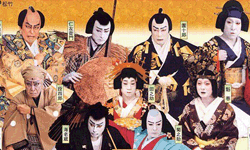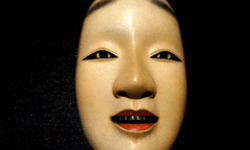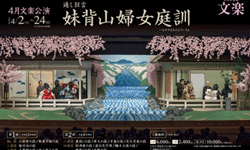
English | Japanese

English | Japanese



Kabuki, Nogaku and
Bunraku are listed as the world's intangible cultural heritages by UNESCO in 2008. They all have a
long history and traditional styles, but have been improved to fit the modern times.
Kabuki is a traditional stage drama with over 400 years history, performed only by men to the accompaniment of songs and music in elaborate
costumes with exaggerated makeup and wigs. It is characterized by a combination of rhythmical words, dancing, unique stage sets and properties, stage assistants called “kurogo” (attired and hooded in black so as to make himself
as if hidden) etc. You can learn a lot about Kabuki at the site of the Kabukiza Theater and Japan Arts Council. Today, Kabuki has been getting more and more popularity and in Tokyo, it is played throughout the year in the Kabukiza Theater. You can also watch Kabuki at the National Theater too for several
months, including the month having the play for first audience and foreigners with an interpretation at the reasonable price. There are also local theaters where Kabuki is played.
Noh and Kyogen were developed together in the 14th century during the Muromachi period (1333-1573). Today, they are thought of together
as the art of Nogaku, or as Noh and Kyogen. They are played at the National Noh Theater irregularly and in private theaters
in some places in Tokyo and local area.
Noh is a classical stage art performed mostly by men to the accompaniment of recitative chants called “yokyoku” and a kind of an orchestra consisting of Japanese flute and three types
of drums. It is characterized by symbolic, highly stylized acting and elaborate masks.
Kyogen is a traditional comic or mime drama without any masks. In addition to being performed between the works of Noh program as an interlude,
it is also performed independently.
Bunraku is a classical puppet play performed to the accompaniment of narrative ballads known as “joruri”. It is
characterized by the harmony of skilled puppeteers and the voices of the “joruri” singer. Unlike the other puppet plays in the world, in Bunraku, the manipulators appear openly, in full view of the audience. Each puppet (bigger
one is almost a life-size doll) requires three puppeteers (two are often in “kurogo” style to bring it to life. Bunraku is performed in the National Theater in Tokyo and the National Bunraku Theater in Osaka irregularly.